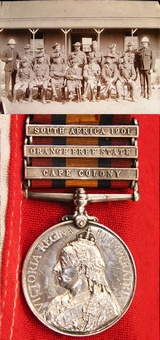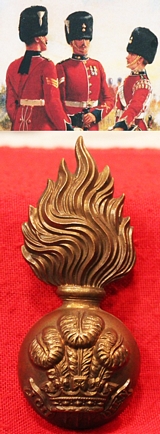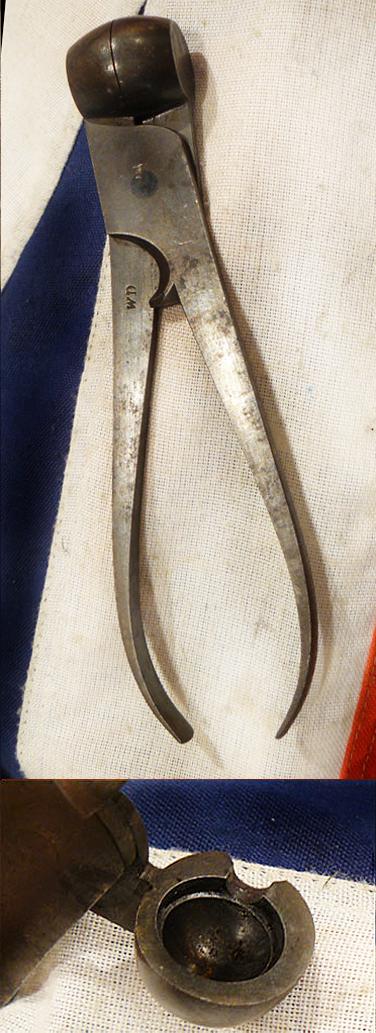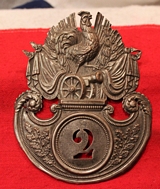Antique Arms & Militaria
A Queen's South Africa Medal to South African Constabulary Cavalryman.
A rare medal of the Boer War with three bars. Issued to 3rd Class Trooper R.G,Phillips.. 12 squadrons of the SAC were raised in Canada by General Baden-Powell. Many Canadians stayed on to live there after the war's end. One photo in the gallery of a group of SAC probably outside the HQ at Koffiefontein read more
245.00 GBP
A Super & Rare US Civil War Souvenir, An Original US Cavalry Gallagher Carbine Stock.
Ideal for the collector of rare Civil War arms that is not necessarily inclined to buy a full rifle for the several thousands of pounds it would cost, or, for an owner of a Gallagher that needs a replacement stock. If needed as such, it would normally be simply impossible to find an original example, in such wonderful condition, ever available on the collector market.
Fine walnut stock, with all steel furniture including the steel hinged patchbox, steel butt plate and side screw mounts. In superb condition and three figure serial number, 257 [repeated], stamped on the inner steel patch box lid. On the underside are several crudely carved notches, traditionally, are supposed to represent enemy soldiers that have been successfully 'introduced' to the horse soldier's shooting prowess.
The Gallager Carbine was conceived in 1860 by Mahlon J. Gallager. Receiving his patent on the 17th of July 1860, Gallager submitted his design to military trials. The design was approved and Federal forces issued a contract for Richardson and Overman of Philadelphia to produce the carbine. This contract resulted in 22,728 Gallagers to be produced before the end of the American Civil War, which was more than some other breechloading rifles (such as the Joslyn Rifle or Starr Carbine) but no where near as many as the Springfield Model 1861 rifled musket (whose production passed over 1,000,000 during the conflict).
The Gallager Carbine had a rather unusual breechloading design, using a modified version of the more typical lever-action mechanism to open the breech. As was the trend at the time, the lever effectively formed the trigger guard , and when pulled downwards slid the barrel forwards, before tiliting downwards. This then allowed the user to remove the spent cartridge (most commonly with a knife) and insert the new cartridge. The barrel was then pushed back into place, then locked when the lever was put into its upwards position, ready for firing.
Initially the Gallager was manufactured utilising a percussion lock mechanism, largely due to the fact that the quickest (and cheapest) cartridges to produce at the time were made of paper. This mechanism was not modified on later models, despite the use of metallic cartridges. Other features of the Gallager included iron fittings (ie the buttplate of the stock and patchbox) and a lack of a forestock.
The lack of a forestock is not that much of a suprise, however, as the shorter stock meant that the barrel could tilt once it had moved forwards (otherwise the barrel would have to have been allowed to move further to allow the user to load the new cartridge). Furthermore, because there was a lack of a forestock, the Gallager also lacked any form of barrel bands and also lacked the ability to have a bayonet mounted to it. The barrel itself had six grooves forming the rifling pattern and measured 22.25in (0.57m) in length.
Photo in the gallery of a US Civil War Horse Soldier with his carbine, sabre and revolver, also a photo of the complete Civil War Gallaghar Carbine in the Smithsonian read more
450.00 GBP
A Very Interesting Antique Civil War Period Belgian 1850's Colt Navy Copy Patent Infringement Revolver
An Antique Engraved Period Belgian copy Civil War Colt, Model 1851 Navy Percussion Revolver circa, 1850's, SN#.3568 , 6 1/8", .35 cal. octagon steel barrel stamped with (2) inspection/proof marks, a small "CROWN" over "R" and a small on the right side of the barrel just in front of the barrel wedge, with barrel stamped 'Cap System by Americain' and twin cross keys on the top flat with light to moderate pitting
Frame marked; sic "PATEND SYSTEM" on the right side. 5-Shot round cylinder with approx. 20% of the scene remaining possibly of Native American teepees. Two piece grip scales, main steel components are serial numbered and match, the cylinder, trigger, and cylinder ratchet pawl are all numbered 26. The action needs mechanical attention in that the trigger, and cylinder ratchet pawl, are not fitted in place. Several screws [around 5] are missing in order to fully assemble it. A jolly decent example of one of the many gun-makers attempting to infringe on Samuel Colt's Navy revolver of 1851.
Just some rudimentary engineering skills required to fully re-assemble and make good.
SOME COLT HISTORY: Samuel Colt had a difficult time when he patented the PATTERSON revolver in the late 1830's and did not really achieve success until he received a purchase order of 1000 newly designed massive .44 caliber "Walker" revolvers to arm Texas Ranger Captain Samuel Hamilton Walker for the Mexican-American War (1846-1848). The "Walker" Colts were delivered in 1847 which Captain Walker carried a pair into battle and was killed in action by a sniper's bullet while leading a cavalry charge at the Battle of Huamantla on October 9th, 1847.
Samuel Colts business started to flourish attracting world recognition upon the creation of the .31 caliber model 1849 "Pocket" revolver but then skyrocketed when the .36 caliber model 1851 "Navy" revolver took the scene. Colt had the proper patents both domestic and foreign to protect his designs but that did not stop competitors from copying his patterns. Colt was able to establish several license agreement's which includes having a representative at the Belgium proof house to monitor and charge the competitors a fee to have their copies inspected and approved. If approved, the top of the barrel was stamped "COLT BREVETE" indicating that the copy was of good quality and could be sold. However, many foreign gun makers would avoid the proof house and inspection and made their own fake proof marks and Colt Brevete stamps. read more
985.00 GBP
A Very Good Fur Cap Plume Badge Of The Royal Welch Fusiliers
An original metal, other ranks Fur Cap Grenade of The Royal Welch Fusiliers worn 1888 - 1908. In excellent condition and complete with its 2 long rear loops. In the nineteenth century, the regiment took part in the Crimean War, the Second Opium War, the Indian Mutiny and the Third Anglo-Burmese War. The regiment was not fundamentally affected by the Cardwell Reforms of the 1870s, which gave it a depot at Hightown Barracks in Wrexham from 1873, or by the Childers reforms of 1881 ? as it already possessed two battalions, there was no need for it to amalgamate with another regiment. Under the reforms, the regiment became The Royal Welch Fusiliers on 1 July 1881. The regiment went on to serve in the Second Boer War of 1899-1902. read more
110.00 GBP
Congratulations To Nat Edwards, The New Master of the Armouries at the Tower of London & Director General
Royal Armouries newly appointed director general, Nat Edwards, joins the Royal Armouries from the renown Thackray Museum of Medicine in Leeds.
Nat Edwards was previously the chief executive officer of Thackray Museum of Medicine in Leeds where he has overseen a £4m refurbishment of the venue since joining in 2018. He has worked in the sector for more than 30 years, including roles at the Science Museum Group, National Library of Scotland, National Trust for Scotland and Glasgow Museums.
The Royal Armouries has sites in Leeds, HM Tower of London and Fort Nelson in Hampshire. It employs about 190 staff and receives about 2 million visitors a year across its three venues.
Courtesy of the Museums Association
We were most honoured to receive a personal invitation by Nat to his first formal patrons event at the Tower, including a personal tour of the Line of Kings. read more
Price
on
Request
An Antique Australian Aboriginal Boomerang With an Elaborate, Super Chip Carving and Decoration
Stone carved, with beautiful chip-carving and a good patinated surface. Over decorated snake and symbol design.
The Australian aboriginal peoples boomerang has probably been around for at least 40,000 years. It is an iconic symbol associated with Australia. What most people do not realize is that many antique aboriginal boomerang don’t actually come back. Only a few of the many forms of old boomerang return.
Antique aboriginal boomerangs come in a large variety of sizes, forms, and decoration. Different boomerangs had different functions. This variation reflects the social and cultural diversity of Aboriginal people. Aboriginals were not one group but had over 200 language groups.
As mentioned most old boomerangs were not made to return. The function of most boomerangs is to hit and kill whatever they are thrown at. Some boomerangs were for hunting but others were for fighting. Some huge antique boomerangs were up to 2 metres long and function like clubs. The majority of aboriginal returning boomerangs were for hunting birds
The Aboriginal boomerang has great aerodynamic properties. It is capable of going 200 metres compared to a throwing stick, which will only travel 60 metres.
Aboriginal Boomerangs could have engravings or be painted with ochre for ceremonial purposes. These designs are not decorative. Designs relate to the Dreamtime ancestors and totems. Collectors like boomerangs with designs and simple chip carved examples.
The Aboriginal boomerang is also used as a digging tool, for making fire and as a club.
Collectors like boomerangs that are old, unique, and rare or have elaborate designs.
60cm x 7.8cm read more
335.00 GBP
Napoleonic Wars 10 Bore 'Brown Bess' or Heavy Cavalry Pistol Scissor Mould
This is a most rare piece of Napoleonic Wars infantryman's and heavy dragoon trooper's combat kit, but curiously the second we have had this year which is very unusual. A mould to create bullets for the 10 bore 'Brown Bess' musket and the 10 bore 1796 full bore Heavy Dragoon pistol. A .75 inch mould that creates a .68 inch ball. These military 10 bore 'Brown Bess' ball moulds are now very rare indeed, and a great addition to a collector that owns an original 'Brown Bess' or the 1796 Heavy Dragoon pistol that would want their original Napoleonic Wars scissor ball mould. Slight pitting overall, some were made by William Davies but this one is not maker marked read more
435.00 GBP
A Very Good Victorian 92nd Gordon Highlanders Silver Cross Belt Badge
92nd Regiment (Gordon) officer's crossbelt badge, silver plated 4 pointed star with St Andrew cross with battle honours, Sphinx below XCII Highlanders, with three threaded screw mounts.
In December 1878, the regiment was ordered to Afghanistan where it was engaged in various security operations following the outbreak of the Second Anglo-Afghan War. In October 1879, it took part in the Battle of Charasiab, where the regiment captured three hills, thereby turning the enemy's flank. Major George White received the Victoria Cross for his part in this action. A further Victoria Cross was won by Lieutenant William Dick-Cunyngham at the Siege of the Sherpur Cantonment on 13 December 1879. At the end of August 1880, the regiment formed part of the force which marched under General Frederick Roberts from Kabul to Kandahar, and at the Battle of Kandahar on 1 September 1880, formed part of the 1st Brigade, which led the advance in sweeping the enemy out of the closely wooded enclosures along the western slopes of the hill on which the village of Gundi Mullah Sahibdad stood.
Instead of returning to the United Kingdom in 1881, the regiment was diverted to Natal to serve in the First Boer War. The regiment participated in the disastrous Battle of Majuba Hill on 27 February 1881. After capturing the hilltop in order to dominate the Boer line, the force of 350 British soldiers of the 58th and 92nd Regiments including a number of Royal Navy gunners, found themselves exposed to heavy and accurate fire early on the following day. This was followed by an assault by 2,000 Boers; despite a desperate last stand, the survivors were swept from the summit. read more
185.00 GBP
A Very Good Steel 'Belted Bullet' Mould Marked 14 and WD (William Davies)
A rare collectable for a 19th century 'two-groove' British rifle, such as the Brunswick. Cavity measures .750" at the bottom of the grooves, with approx .70” ball. This mould casts a spherical ball with bands for two-groove rifling. stamped by maker W.D. William Davies who was one of England's best bullet mould makers in the reign of King George in England, and later during the early part of Victoria's reign. This mould is in excellent plus condition.
The rifle with belted ball two-groove rifling that was at the pinnacle of rifle development in the 1830s and 1840s. With multi-groove rifling it was difficult to ram the ball down particularly if the barrel was fouled up and often a hammer had to be carried to belt down the ramrod.
With a belted ball, a belt was created around the bullet and two corresponding deep grooves were cut in the barrel. The ball was carefully located in these grooves and it could be easily pushed down. Since the two-groove rifling was deep cut, there was no possibility of the bullet stripping and quite high charges could be used. Belted ball rifles tended to be in the bigger calibres as they were too tricky to load in smaller calibres.
Overall length 7.5" read more
325.00 GBP
A French 1830's Belltop Shako Helmet Plate 2nd Regiment
Louis Philippe I (6 October 1773 - 26 August 1850) was King of the French from 1830 to 1848 as the leader of the Orleanist party. As a member of the cadet branch of the Royal House of France and a cousin of King Louis XVI of France by reason of his descent from their common ancestors Louis XIII and Louis XIV of France, he had earlier found it necessary to flee France during the period of the French Revolution in order to avoid imprisonment and execution, a fate that actually befell his father Louis Philippe II, Duke of Orleans. He spent 21 years in exile after he left France in 1793. He was proclaimed king in 1830 after his cousin Charles X was forced to abdicate in the wake of the events of the July Revolution of that year. His government, known as the July Monarchy, was dominated by members of a wealthy French elite and numerous former Napoleonic officials. He followed conservative policies, especially under the influence of the French statesman Francois Guizot during the period 1840-48. He also promoted friendship with Britain and sponsored colonial expansion, notably the conquest of Algeria. His popularity faded as economic conditions in France deteriorated in 1847, and he was forced to abdicate after the outbreak of the French Revolution of 1848. He lived out his life in exile in Great Britain. read more
125.00 GBP











